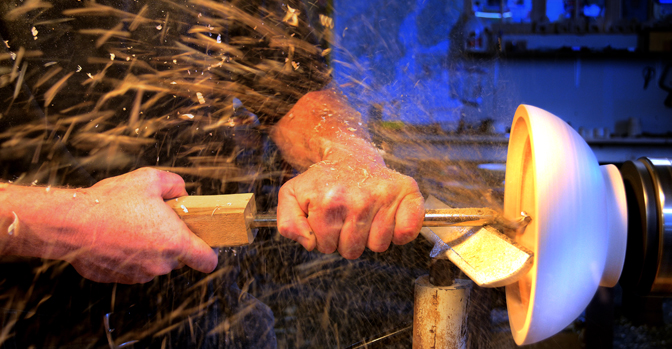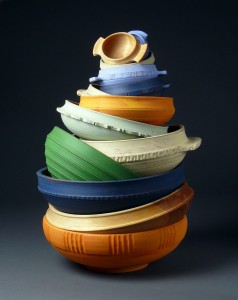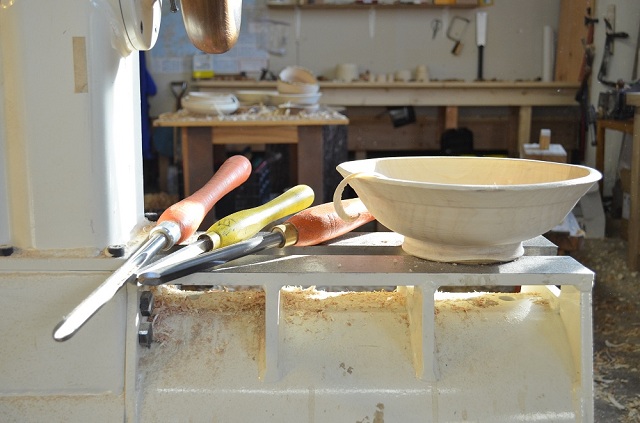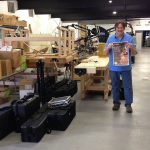We may receive a commission when you use our affiliate links. However, this does not impact our recommendations.
I caught up last week with Jim Sannerud, a bowl turner and traditional furniture maker in Minnesota. Here’s our conversation, the 3rd installment in my “Woodworking Daily” series of questions for great minds in the woodworking community. And there’s a twist to this series – each interviewee will tell me who I should talk to next. Enjoy!
Dan: What are the tools and fixtures you use for bowl turning?
Jim: Large lathe (24” swing), 1/2” bowl gouge, shaving horse, draw knife, Sloyd knife, assorted carving gouges. The most important tools to me are my hands and eyes.
Dan: What is your philosophical or artistic approach to both turning and furniture-making?
Jim: In a nutshell – keep it quiet, stay connected, waste nothing.
If I had to choose which part of the process I like the most, I would have to say it is being in the forest. It’s inspirational and calming for me and keeps me grounded in why I love the material I’m working with. I can look at a tree and see the bowls and all the things that I want to make in a standing tree. At some point in my career, I just got tired of a noisy and dusty shop. I made a conscious effort to get rid of the “distractions” power tools created and simplified everything down to just my lathe and hand tools.
Working on a lathe is a very fluid process. You move your whole body when you make a piece and it keeps you very connected to the piece of wood spinning on the lathe. I often refer to the process as a dance when I’m teaching. Because I’m turning green wood, once the form is done I let the wood do the work in finalizing the shape.
After the lathe work it is all hand tools, Sloyd knife, draw knife and carving gouges. I use my knowledge of wood and the skills of my hands to create pattern and texture on the bowls. I got rid of the sandpaper and leave my tool marks on all my work – furniture and bowls – enhancing the tactile and visual elements of a piece. To me the result is more organic. When I see pattern and texture made by machines I can see it immediately. I’m not saying it’s bad work, I can just see a difference. In furniture making, hand tools are essential to feel the wood.
I use as much of the tree as I can, not just for bowls but chair legs out of the trunk, finding spoon blanks in the branches, birch bark for weaving, shrink boxes also out of branches. Cut-offs go to a friend to use as fuel to heat his shop and all the shavings are picked up by local gardeners for landscaping, mulch, and bedding for urban chickens. Even in choosing my material, I don’t take healthy trees. The tree is either dying or coming down for another reason.
I want to make things that last. The wood needs to be sound, the technique solid and the joinery time tested. My works should be pleasing to the eye, comfortable and fun to make!
I also don’t fear mistakes like I used to. They are valuable teaching tools. You can’t move forward as a maker without making mistakes. If you’re not making mistakes, you’re not trying hard enough.
Dan: You’re currently in a very active portion of your career. Where are you finding your most exciting ideas these days?
Jim: My ideas are coming from many places. I find that when I get out of my box and learn about something new like playing the piano, learning a different language, studying design or working in a different medium like clay, it opens up my mind to see things so differently and make new connections. I can look at an old, burnt, hollowed-out redwood stump or gaze across Lake Superior and have a thousand ideas come in. Never be without your camera or sketch book – inspiration is everywhere.
Dan: Who should I talk to next?
Jim: Tough one – Mike Siemsen, Tib Shaw, or Michael Cullen.
Dan: Many thanks for these exciting ideas, Jim!
Note to readers: Speaking of exciting, we are opening a brand new channel in our slate of streaming video resources for woodworkers. It is called “Popular Woodturning,” featuring the amazing Tim Yoder. Click here to read more about this new release!
Here are some supplies and tools we find essential in our everyday work around the shop. We may receive a commission from sales referred by our links; however, we have carefully selected these products for their usefulness and quality.













Enjoying the series, Q&A with Jim Sannerud, Had a question, What are shrink boxes. Thanks,